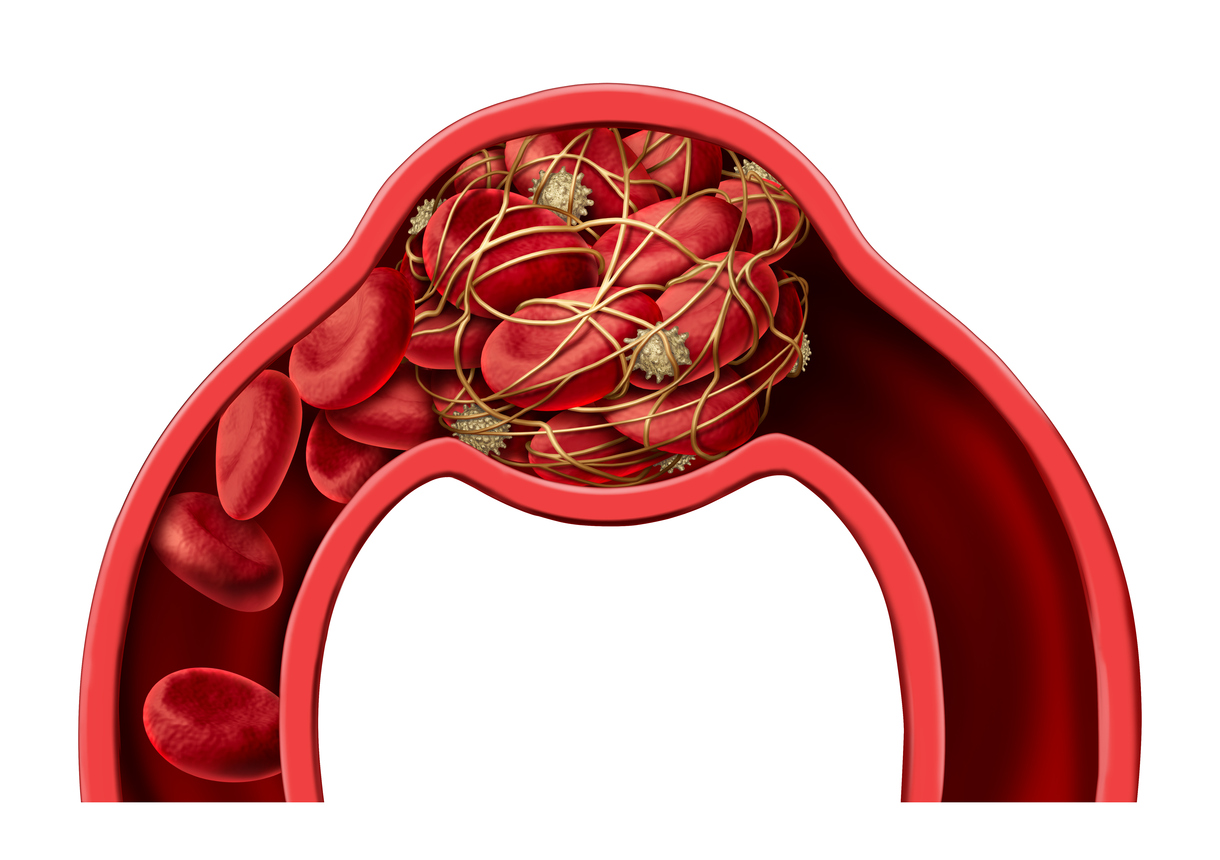What Are the Signs of a Blood Clot?
Editors carefully fact-check all Drugwatch.com content for accuracy and quality.
Drugwatch.com has a stringent fact-checking process. It starts with our strict sourcing guidelines.
We only gather information from credible sources. This includes peer-reviewed medical journals, reputable media outlets, government reports, court records and interviews with qualified experts.

Depending on where in the body they occur, blood clots can cause a range of symptoms from pain to numbness, from coolness to warmth. These symptoms also won’t be the same in everyone. And sometimes, there won’t be any symptoms at all.
Blood clots in the leg can cause redness or even pale skin. Blood clots in the brain can cause difficulty walking and numbness or weakness on just one side of the body. Blood clots in the lungs can cause sudden shortness of breath, fast heartbeat, and coughing. Blood clots in the abdomen can cause abdominal pain, nausea, vomiting, and bloating. Blood clots in the heart can cause chest pain or pressure, shortness of breath, sweating, and indigestion.
Blood clots are also different depending if they develop in a vein (venous) or an artery (arterial). Venous clots may take longer to build up, while arterial clots cause symptoms immediately.
It’s important to pay attention to the signs of potential blood clots and to seek treatment as soon as possible because blood clots can be dangerous to your health.
What Are the Signs of a Blood Clot in the Leg or Arm (Deep Vein Thrombosis)?
If a blood clot in the arm or leg is small enough, you may not have any symptoms. With a large clot, your entire leg might swell. The pain may feel like a pulled muscle or a “Charlie horse.”
The most common place for blood clots is the lower leg. It’s unusual to have clots in both arms or both legs at once. So, if you experience symptoms in only one leg or arm, they may indicate a blood clot.
A clot in your arm or leg may not be dangerous there, but it poses a risk of breaking off and lodging in your lungs. This is known as a pulmonary embolism and can be fatal.
Signs of a blood clot in the arm and leg include:
- Pain
- Redness or bluish skin coloration
- Swelling
- Pale color
- Coolness to the touch
- Tenderness
- Increased warmth in the part of the limb that’s swollen or hurting
- Loss of feeling or numbness in the limb
What Are the Signs of a Blood Clot in the Brain?
A blood clot on or in the brain is diagnosed through an MRI or CT scan. A blood clot in the brain can block blood flow, causing a stroke.
But not every blood clot in the brain results in a stroke. And not all strokes are caused by blood clots. About 20 percent of strokes are caused by aneurysms, which are bulges or weakness in the wall of a blood vessel.
Signs of a blood clot on or in the brain include:
- Trouble speaking
- Impaired vision
- Numbness or weakness on one side of the body or face
- Trouble walking
- Inability to think clearly or confusion
- Seizures
- Dizziness
- Severe headache
What Are the Signs of a Blood Clot in the Lungs (Pulmonary Embolism)?
Clots in the veins of the legs or arms can break off and travel to the lung. The resulting pulmonary embolism can cause organ damage or leave to death.
Seniors are at increased risk for pulmonary embolism. This is partly because they are less mobile.
Symptoms of a blood clot in the lungs include:
- Chest pain that may be short and stabbing and may get worse with each breath
- Sudden shortness of breath
- Rapid pulse
- Rapid breathing
- Unexplained coughing possibly with bloody mucus
What Are the Signs of a Blood Clot in the Abdomen?
Blood clots in the lungs can cause sudden shortness of breath, fast heartbeat, and coughing. Blood clots in the abdomen can cause abdominal pain, nausea, vomiting, and bloating. Blood clots in the heart can cause chest pain or pressure, shortness of breath, sweating, and indigestion.
Researchers in Denmark found that certain abdominal blood clots may be a sign of undiagnosed cancer. Abdominal blood clots may also be more likely in people with medical conditions that cause fluid buildup or swelling in the abdomen.
Abdominal blood clots can cause the following symptoms:
- Abdominal pain (especially if it gets worse after eating or over time)
- Nausea
- Blood in stool
- Bloating
- Vomiting
- Diarrhea
- Buildup of abdominal fluid
What Are the Signs of a Blood Clot in the Coronary Artery?
A blood clot in or near the heart can cause a heart attack, according to the World Heart Federation. Women may have different symptoms of heart attacks than men. Women’s symptoms may be less specific.
Blood clots in the coronary artery cause the following symptoms:
- Extreme chest pain that may radiate to the left part of your jaw, shoulder and arm
- Chest pressure or heaviness
- Shortness of breath
- Nausea
- Indigestion
- Sweating
When to Go to the Doctor for a Blood Clot
See your doctor right away whenever you think you may have symptoms a blood clot. The more quickly it is diagnosed, the better your chances of avoiding permanent harm or death. The diagnosis is usually made using a combination of symptoms, physical examination, and an imaging test.
A doctor may prescribe an anticoagulant, or blood thinner, to prevent new blood clots and keep existing clots from growing. Names of blood thinners include dabigatran (Pradaxa), warfarin (Coumadin), apixaban (Eliquis) and rivaroxaban (Xarelto).
For people who cannot take blood thinners, doctors may recommend an IVC filter. These devices are also used in patients recovering from accidents and surgeries when there is a high risk of potentially fatal lung clots.